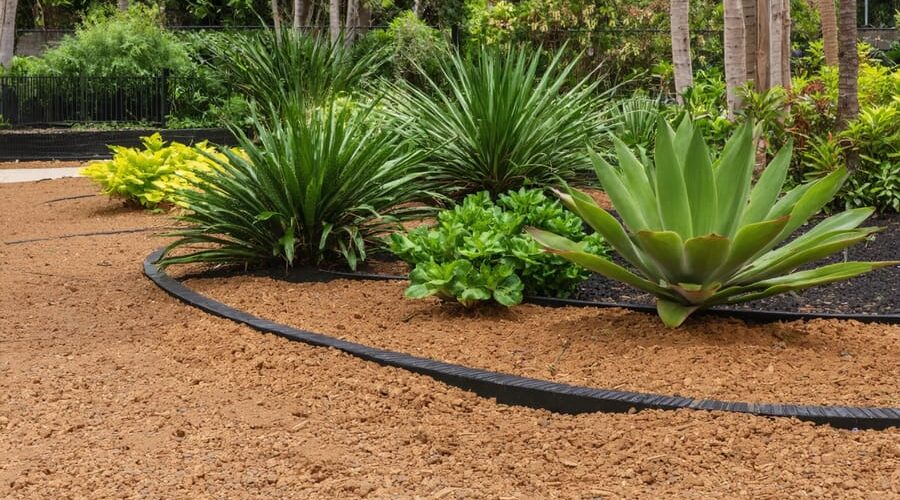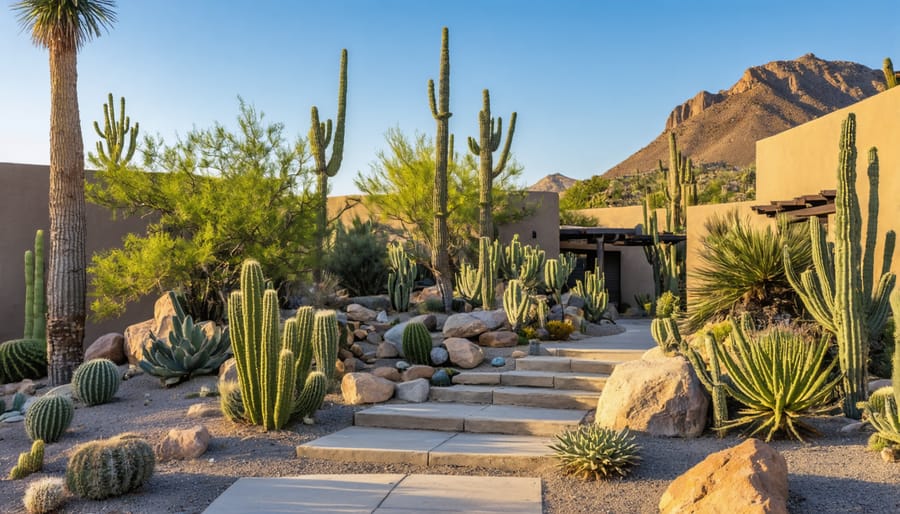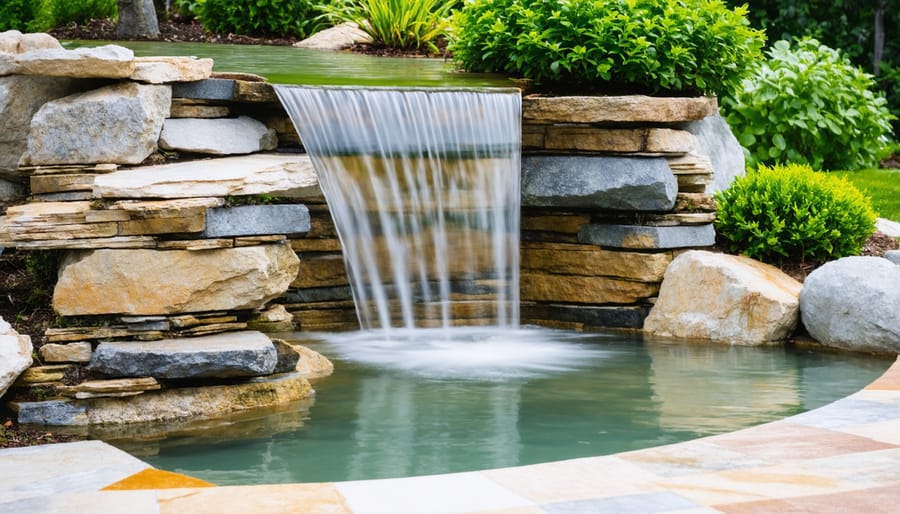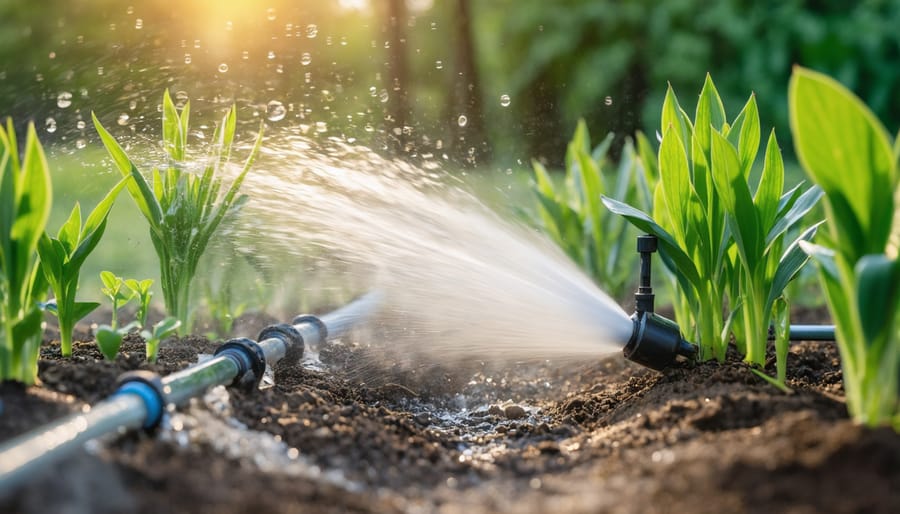
Smart Water Garden Design That Thrives in Drought
Transform your outdoor space into a water-wise oasis by selecting drought-resistant native plants, implementing smart irrigation systems, and strategically grouping vegetation by water needs. Install moisture-retaining mulch layers 2-3 inches deep around plants to reduce evaporation and suppress water-hungry weeds. Design your landscape with permeable surfaces and rain gardens to capture natural precipitation, allowing you to create a thriving water garden that thrives in any climate. Incorporate water-efficient features like drip irrigation and rain sensors to deliver precise amounts of water directly to plant roots, cutting water usage by up to 50% while maintaining lush, vibrant growth. These practical solutions not only conserve precious water resources but also reduce maintenance time and create a resilient garden that adapts to changing weather patterns.
Smart Plant Selection for Water Conservation
Native Aquatic Plants That Minimize Water Loss
When it comes to creating a water-efficient garden, choosing the right native aquatic plants is essential for maintaining a sustainable ecosystem while minimizing water loss. Australian native species like Water Ribbons (Triglochin procera) and Nardoo (Marsilea drummondii) have evolved to thrive in our climate, naturally requiring less water than exotic varieties.
These indigenous plants have developed remarkable adaptations to prevent water loss. Many feature waxy coatings on their leaves or small leaf surfaces that reduce evaporation. Running Marsh Flower (Villarsia reniformis) and Native Water Milfoil (Myriophyllum crispatum) are excellent examples that create beautiful displays while helping to maintain water levels.
For shallow water areas, consider incorporating Native Rush (Juncus usitatus) and Knobby Club Rush (Ficinia nodosa). These plants naturally form dense root systems that help prevent water seepage and provide natural filtration. In deeper zones, Water Snowflake (Nymphoides indica) and Native Water Lily (Nymphaea gigantea) offer stunning flowers while their floating leaves help reduce evaporation from the water surface.
Remember to group plants with similar water needs together and maintain appropriate water depths for each species. This thoughtful arrangement not only creates an aesthetically pleasing display but also ensures optimal water efficiency throughout your garden.

Strategic Plant Zoning
Strategic plant zoning is like creating a neighborhood where plants with similar needs live together. Start by mapping your garden’s sunlight patterns throughout the day – which areas get full sun, partial shade, or deep shade? This information is crucial for both plant survival and water efficiency.
Next, group your plants into hydrozones based on their water requirements. Create three main zones: high, moderate, and low water use. Place thirsty plants together in one area, drought-resistant plants in another, and moderate water users in between. This smart arrangement means you won’t waste water by overwatering drought-tolerant plants while trying to satisfy thirstier ones nearby.
Consider placing high-water-need plants in naturally moist areas or spots that collect rainwater. Position drought-tolerant plants on slopes or in areas that tend to dry quickly. Remember to factor in your local climate and seasonal rainfall patterns when planning these zones.
For maximum efficiency, keep plants with similar root depths together. Shallow-rooted plants need frequent but light watering, while deep-rooted plants prefer less frequent but deeper soaking. Place taller plants where they can provide natural shade to smaller, moisture-loving species.
By following these zoning principles, you’ll create a garden that not only looks beautiful but also uses water more efficiently, reducing both your water bills and maintenance time.
Water-Smart Design Features
Recirculating Water Systems
Recirculating water systems are a game-changer for creating water-efficient gardens that are both beautiful and environmentally responsible. These clever systems work by continuously cycling water through your garden features, significantly reducing waste and maintaining a healthy ecosystem.
The heart of a recirculating system typically includes a pump, filtration unit, and collection basin. Water flows through your garden features – whether it’s a fountain, stream, or waterfall – and is collected, filtered, and pumped back to start the cycle again. Think of it as your garden’s own mini water treatment plant!
Setting up a basic recirculating system is simpler than you might think. Start with a waterproof basin or reservoir buried in the ground, add a submersible pump with appropriate tubing, and include a basic filtration system to keep the water clean. For larger features, consider adding biological filters that use beneficial bacteria to maintain water quality.
The benefits are impressive: you’ll save hundreds of gallons of water compared to traditional irrigation, create a thriving habitat for beneficial insects and birds, and enjoy the soothing sounds of moving water without the guilt of waste. Plus, these systems are relatively low-maintenance – just check the pump regularly, clean the filters as needed, and top up water levels during dry spells.
Remember to cover your reservoir to prevent evaporation and consider adding aquatic plants to help naturally filter the water. With proper planning, your recirculating water system can become the cornerstone of a truly sustainable garden.

Rain Gardens and Bio-Retention
Rain gardens and bio-retention systems are brilliant solutions for making the most of natural rainfall while creating beautiful, low-maintenance garden features. These specially designed areas work like natural sponges, collecting and filtering rainwater from your roof, driveway, or lawn, preventing runoff and allowing water to slowly seep into the ground.
Creating a rain garden is simpler than you might think. Start by choosing a natural depression in your yard or dig a shallow basin about 6 inches deep. The area should be at least 10 feet from your house’s foundation and positioned to catch water from downspouts or surface runoff. Layer the bottom with a mix of sandy soil, compost, and topsoil to promote good drainage.
Select plants that can handle both wet and dry conditions – native species are your best bet. Deep-rooted perennials like Black-Eyed Susans, Swamp Milkweed, and Purple Coneflowers work wonderfully. Plant them in zones, with the most water-tolerant species in the center where water collects longest.
Bio-retention areas take rain gardens a step further by incorporating engineered soils and underground drainage systems. While more complex to install, they’re incredibly effective at managing larger volumes of water and can be seamlessly integrated into your landscape design. These systems not only help conserve water but also protect local waterways by filtering out pollutants before they enter the groundwater system.
Smart Irrigation Solutions
Modern irrigation technology has revolutionized the way we water our gardens, making it easier than ever to maintain beautiful landscapes while conserving water. By implementing smart water management strategies, you can reduce water waste while ensuring your plants get exactly what they need.
Drip irrigation systems are a game-changer for water-efficient gardens. These systems deliver water directly to plant roots through small tubes with tiny holes, minimizing evaporation and preventing overwatering. You can easily set them up yourself using basic DIY tools, and they’re perfect for both garden beds and container plants.
Smart controllers take the guesswork out of watering schedules. These clever devices connect to your local weather data and automatically adjust watering times based on rainfall, temperature, and humidity. Some even let you control your irrigation system from your smartphone!
Moisture sensors are another brilliant addition to your garden. These affordable devices monitor soil moisture levels and prevent unnecessary watering. Place them in different garden zones to account for varying water needs among your plants.
Consider installing a rain barrel or catchment system to collect rainwater for your garden. This free water source is perfect for irrigation and helps reduce your reliance on municipal water supplies. Plus, many plants actually prefer rainwater to treated tap water.
Remember to water early in the morning or late in the evening to minimize evaporation, and group plants with similar water needs together for more efficient irrigation zones.

Maintenance for Maximum Efficiency
Seasonal Adjustments
Adapting your garden’s water usage throughout the year is crucial for maintaining efficiency while keeping your plants healthy. Different seasons demand different approaches to water management, and following smart seasonal maintenance tips can help you achieve the perfect balance.
During spring, gradually increase watering as temperatures rise and plants begin active growth. Install a rain gauge to track natural precipitation and adjust your irrigation schedule accordingly. Morning watering is ideal during this season to prevent evening moisture that might encourage fungal growth.
Summer requires the most careful water management. Water deeply but less frequently to encourage deep root growth. Apply mulch to retain moisture and consider installing shade cloth over sensitive plants during peak heat. Monitor soil moisture levels daily and adjust automatic systems based on weather forecasts.
As autumn approaches, reduce watering frequency as temperatures cool and plants prepare for dormancy. This is also the perfect time to check and repair any irrigation systems before winter sets in.
Winter usually requires minimal watering, except during dry spells. Focus on maintaining mulch layers and protecting pipes from frost damage. For areas with regular rainfall, you might only need to water indoor or covered plants during this season.
Remember to adjust your irrigation timer monthly and after significant weather changes. Using smart irrigation controllers can automate these seasonal adjustments, making water management more efficient and hassle-free.
Monitoring and Prevention
Regular monitoring of your water-efficient garden is crucial for maintaining its effectiveness and preventing waste. Start by checking your irrigation system weekly for leaks, blocked sprinklers, or damaged components. A simple walk-through during watering can help you spot issues like misaligned sprayers or areas getting too much or too little water.
Install a rain gauge to track natural precipitation and adjust your watering schedule accordingly. Modern soil moisture meters can also help you make informed decisions about when to water. Many gardeners find that setting calendar reminders for these checks helps maintain consistency.
Consider implementing a maintenance checklist that includes:
– Inspecting mulch levels monthly
– Checking plant health for signs of over or under-watering
– Testing soil moisture at different depths
– Cleaning filters and unclogging drip emitters
– Adjusting automatic timers with seasonal changes
Watch for signs of water waste like runoff on pathways or pooling around plants. These indicators suggest your watering schedule needs adjustment. During rainy seasons, remember to turn off automatic systems to prevent overwatering.
Keep a garden journal to track water usage and plant performance. This record helps you identify patterns and make improvements over time. Many gardeners find that small adjustments based on careful monitoring can lead to significant water savings while maintaining a thriving garden.
Drought Response Strategies
When drought strikes, quick action can help protect your water garden and maintain its beauty while conserving precious resources. Start by adding floating plants like water lilies or water lettuce to cover 60-70% of the water surface, reducing evaporation significantly. Install a shade sail or strategically place potted trees around your water feature to minimize water loss from direct sunlight.
Monitor water levels daily and top up only when necessary. Consider installing a water level sensor that alerts you when levels drop too low. During severe drought, you might need to temporarily reduce the operating hours of fountains and waterfalls, running them only during cooler parts of the day or when entertaining.
Create a drought emergency kit containing items like a water quality test kit, beneficial bacteria supplements, and a battery-operated aerator. These tools help maintain healthy water conditions when you need to reduce water usage. Consider installing a rainwater harvesting system to capture and store water during wet periods for use during dry spells.
For pond fish, reduce feeding during drought periods as warmer water holds less oxygen and fish metabolism slows. Add extra aeration through air stones or surface agitators to maintain adequate oxygen levels. If necessary, be prepared to temporarily rehome sensitive aquatic plants or fish in indoor containers until drought conditions improve.
Remember to maintain your filtration system regularly, as efficient filtration becomes even more crucial during drought periods when water quality can deteriorate quickly.
Creating a water-efficient garden isn’t just about saving water – it’s about building a sustainable and thriving outdoor space that works in harmony with nature. By implementing the strategies we’ve discussed, from choosing drought-resistant plants to installing smart irrigation systems, you can significantly reduce your water consumption while maintaining a beautiful garden.
Remember that every small change counts. Start with simple steps like mulching and grouping plants with similar water needs, then gradually incorporate more advanced techniques such as rainwater harvesting and drip irrigation. The key is to work with your local climate and soil conditions, not against them.
Regular maintenance plays a crucial role in water efficiency. Check your irrigation system monthly, adjust watering schedules with the seasons, and keep an eye on soil moisture levels. Don’t forget that healthy soil is the foundation of a water-efficient garden – invest time in improving your soil structure and organic content.
As climate patterns continue to change, water-efficient gardening isn’t just a trend – it’s becoming a necessity. By adopting these practices, you’re not only creating a more resilient garden but also contributing to environmental conservation. Your water-efficient garden can serve as an inspiration to others in your community, showing that it’s possible to have a lush, vibrant outdoor space while being mindful of water resources.
Start implementing these changes today, and watch your garden flourish while keeping water usage in check.
